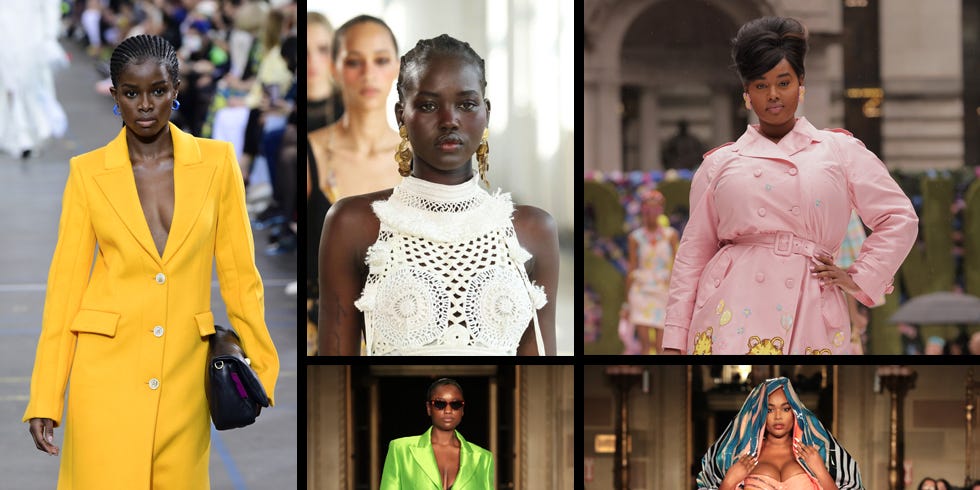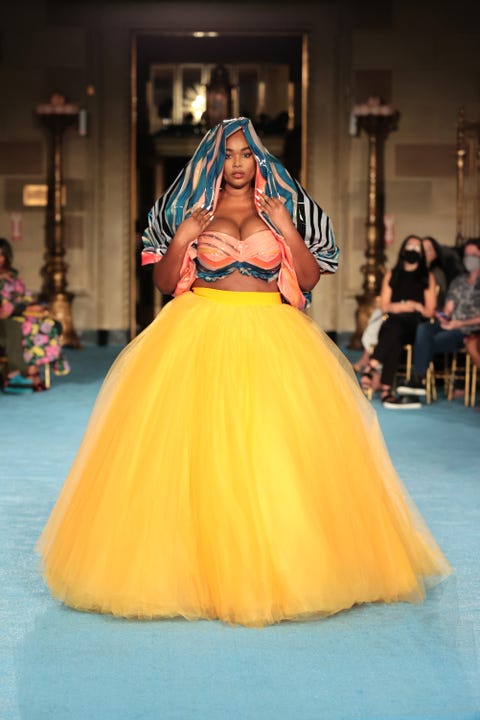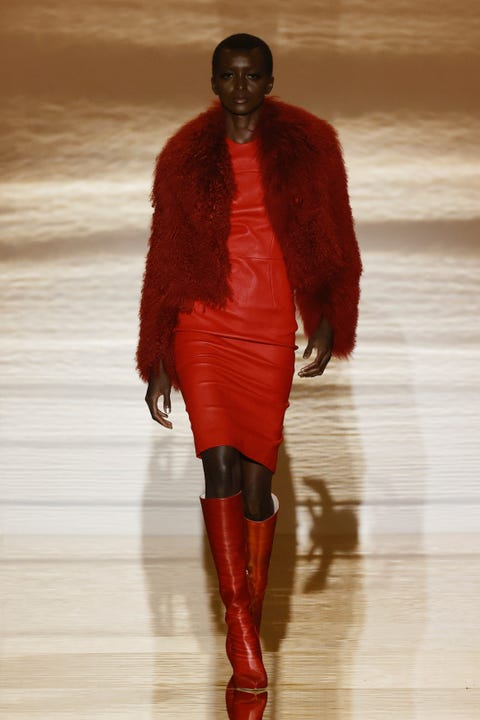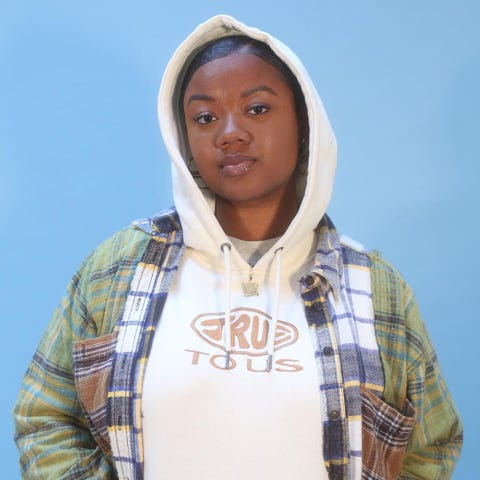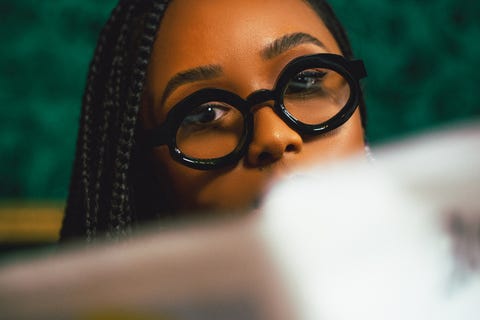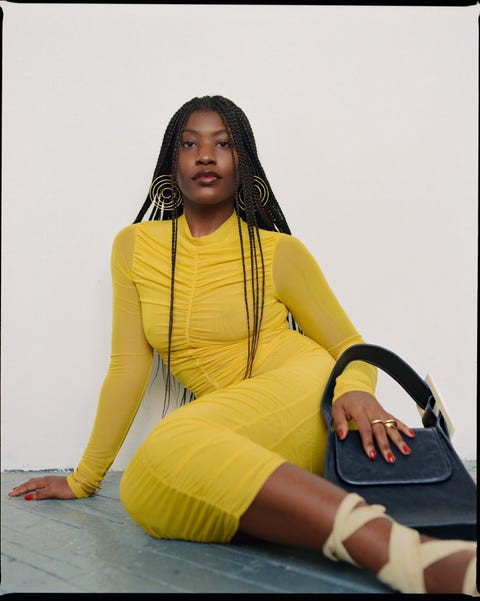After the murders of George Floyd and Breonna Taylor by police, the protests that ensued during the summer of 2020 cornered a number of industries into publicly declaring their support for the Black community. Fashion was no exception. Long-known for its less-than-stellar reputation for racial diversity, brands across all facets of the business made formal and informal commitments to do better. But has there been any progress?
A comprehensive New York Times piece published in April highlights quite plainly the executive level’s response to members of the press inquiring about fashion’s diversity problem: only allowing interviews via email or questions in advance, relying heavily on PR jargon to describe their diversity initiatives, and completely shying away from sharing hard numbers.
Specifically, a set of questions sent to the Council of Fashion Designers of America (CFDA) via email (a phoner was not possible due to a scheduling conflict, according to their rep) didn’t reveal much in the way of measuring exactly how far along the company has made strides on diversity.
The response eventually came from CFDA president CaSandra Diggs herself. Diggs was appointed in August of last year, the first Black person to assume the role in the company’s 59-year history. She pointed out the limits of quantifying by race: “While I understand the desire to focus on numbers to keep companies accountable, the primary focus on quotas, which emphasize quantity over quality, does little to help usher in the sea change,” she said via email. “Quotas can undermine the confidence of Black talent and erode their true value to companies as their presence is branded ‘tokenism.’”
She isn’t totally wrong, but it’s difficult to measure progress without focusing on the numbers. The tech industry also has a poor reputation on the diversity front, but giants like Google have easily accessible data breaking down the racial makeup of their employees. That level of transparency would be a step in the right direction.
The job of holding fashion companies accountable has unfortunately fallen to the very people who have had to claw their way to the top. Black in Fashion Council, which was founded by The Cut editor-in-chief Lindsay Peoples Wagner and publicist Sandrine Charles, is focusing on a top-down approach to ensuring brands keep their word. Founded last year, the organization is made up of professionals with varying roles in the industry. Though strategy differs from company to company, according to Wagner, “with every single one, we have quarterly calls to go over specific initiatives that they have put in writing.” In addition to providing guidance to companies, Black in Fashion Council hosts job fairs, town halls, and showrooms featuring Black designers.
The increase in interest for working with the Black in Fashion Council can be attributed to the fact that “companies are seeing what we’re doing and we have tangible results,” said Charles, adding that she thinks brands “want to be a part of the change we’re trying to make.”
When asked about its company goals or benchmarks it would like to reach in terms of the amount of Black talent represented, LVMH responded via email: “LVMH’s goal in the U.S. is to increase the representation of people of color (inclusive of Black talent) in senior leadership positions to 30 percent (versus 26 percent currently), while our employee base is 64 percent non-white (including 12 percent Black talent).” It’s also worth noting that companies are not allowed to gather diversity statistics in many European countries, including France and Italy.
This content is imported from Instagram. You may be able to find the same content in another format, or you may be able to find more information, at their web site.
One of LVMH’s benchmark brands, Sephora, “is making strides with strong D&I initiatives,” they wrote. An example of that commitment seems to be the cosmetic retailer’s decision to take the 15 Percent Pledge.
The 15 Percent Pledge, a non-profit created last summer by designer Aurora James, asks retailers to make a contractual commitment to dedicate 15 percent of their shelf space to Black-owned brands over the course of an agreed upon length of time. The pledge includes a quarterly audit and an assessment of recruiting practices. To date, 27 retailers have taken the pledge, including Nordstrom, Gap Inc., Madewell, and Kith.
“If you have a retail store where 40 percent of your employees are Black, but then you have 2 percent of your corporate staff that’s Black, no Black board members, and then 70 percent of your models and your marketing campaigns are BIPOC, that’s optical allyship.” With this statement, James is highlighting how brands can often give off a veneer of diversity, without actually doing the work to achieve those goals. That is precisely what she’s trying to upset with her organization.
Despite roughly a year and a half out from its founding in May 2020, James has already seen the impact of the pledge. “I see those dollars at work. I see those purchase orders that they’re giving to Black-owned businesses.”
The fashion industry is of course made up of all kinds of professions, most of whom don’t work in its highest ranks: hair stylists, makeup and nail artists, photographers, stylists, editors, publicists, casting agents, and countless assistants and interns. Whether any change is happening and whether it’s being felt has to go beyond speaking to people in the C-suite of major companies. Which means, measuring the progress of racial diversity is going to be long, arduous, and complex. For Black professionals in the industry, many of whom work in a freelance capacity, COVID-19 added another devastating layer to 2020.
For Kelly Bellevue, a 31-year-old New York-based makeup artist, work ground to a halt until early 2021. Now that she is working consistently, she said she has noticed a difference in the amount of diversity on set. “Prior to 2020, I—and maybe one other assistant—would be the only Black people on set,” she said. After COVID restrictions eased, “I have not been on a set where I’m the only Black person… ever.”
Celebrity hairstylist Naeemah Lafond, 42, shared similar sentiments. “For the first time ever, I’m seeing Black talent on set, consistently,” she wrote. Lafond, who published her own Instagram guide on how the industry can show up for Black hair stylists last summer, has also served as a mentor in an incubator program created last year by The Wall Group to pair talent at the agency with creatives from underrepresented backgrounds.
That progress hasn’t been felt by Kuoth Weil, a 30-year-old model and actress based in Los Angeles. She said that, in her experience, there hasn’t been “any kind of strides in terms of the promise that brands had made in order to make sure that Black or people of color get equity for the work that they’re doing.”
Michael Rotimi, the 31-year-old founder of Offshore, said his model and talent agency was always viewed as a place “where you could find Black talent.” After the protests last year, “people that probably already knew about me took the opportunity to reach out and work with me to, I guess, feel less guilty about their normal practices.” Rotimi described that time as “an influx” but outreach gradually “just kinda got like less and less, but still steady.”
Even as those “steady” incremental changes are made, some may question whether it’s sincere. Jorge Wright, a freelance casting director who is most known for casting non-models of color, said he has seen some improvements but doesn’t know “if it’s genuine.” Wright said he hasn’t personally experienced a real change in the amount of work he has gotten, though he notes his friends signed to agencies have seen a boost. “I’m at the point in my Blackness where I’ll take it how I can get it,” Wright said. “I don’t care what your intents were. It is what it is. She got paid, we got paid, and we look great.”
Even within the Black community, your professional experiences are shaped in large part by your perceived racial makeup. New York-based photographer Cheril Sanchez is conscious of the fact that, as a fair-skinned Afro-Latina, she may not have always had the same struggles as darker-skinned professionals in her field. That said, she wants to take a step back from the industry and focus on telling more personal stories in her work, adding, “I love working in fashion, but there’s a lot of gate-keeping going on.”
As one of the recipients of Harlem’s Fashion Row Icon 360 grant, designer Sergio Hudson, 37, sees progress being made to amplify Black talent. He also recognizes that there is a long-held perception that Black designers aren’t expected to make luxury clothing. Hudson, whose garments have been worn by the likes of Michelle Obama and Kamala Harris, believes Black designers are often shut out of the American sportswear category. “Why?” he asks. “Because we’re not expected to make clothing that the First Lady would want to wear.”
Though content creator Jourdan Ash’s focus is on streetwear and not luxury, the platform that she is building with True to Us highlights Black and brown women in a segment of the industry that has gotten visibly more white, despite Black people being its main source of inspiration. “In sneakers and streetwear, in order to have a space in these areas, you have to look a certain way and be a certain type of attractive,” said the 28-year-old Harlem native. “In 2021, we shouldn’t even have to be looking at a campaign where we ask, ‘Where are the Black women?’”
For photographer Breyona Holt, 26, Black women are her primary subjects, but acceptance in the industry has come with caveats. “Although they took chances on a lot of us throughout the year, we were micromanaged throughout the entire process,” she said. And for the Black creatives getting high-profile campaigns for the first time, determining their rates will also be a hurdle. “When you talk to other white artists, you realize that because we had never been in a space like this, we don’t even know the rates that were happening before,” Holt said. “So some of us are still being paid under the wage that we’re actually supposed to be paid for the role.”
What can have an impact is mentorship—someone who is committed to showing you the ropes and helping you succeed. “I feel like there are so many opportunities to take someone under your wing and make a complete difference in their lives,” said publicist Ah-Niyah Gold, whose client list includes the platform Black Fashion Fair. Having a mentor who introduced her to all aspects of the industry ultimately led her to PR, and eventually starting her own agency. “I just feel like those things ultimately will help build us up and also keep us informed and not in the dark.”
According to Clara Jeon, co-founder of Chapter 2, a communications and brand management agency, “While there are more press opportunities for Black designers, I get really frustrated by the doubling down on the sense of otherness.” Jeon, who is Asian, points out that during Black History Month she gets increased interest in the Black designers on her roster. “Where are you every other month?” she asks rhetorically.
If fashion companies are committed to a more diverse workforce, how they recruit from colleges is an important point of focus. “There was significant interest and outreach from fashion companies saying they want diverse talent for internships and employment,” said Tardis Johnson, Associate Dean for Student Academic Support at the Fashion Institute of Technology. “We had the pandemic happening, so that put limitations on what can be done as part of recruitment.”
Brandice Daniel, founder and CEO of Harlem’s Fashion Row, also recognizes the need to prioritize college students and HBCUs in particular. “We made supporting HBCU Fashion Departments a pillar for our non-profit ICON360,” she said. “When we spoke with Gap Inc. about this pillar, they wanted to support it immediately.” That support came in the form of a collaboration called “Closing the Gap,” funded by the retailer in the form of $510,000 awarded to ten historically Black colleges and universities.
For all the talk of inclusion and acceptance into the fashion industry, it’s also worth asking how much designers even care to be a part of the industry in any formal capacity. Black designers don’t necessarily need to be on the fashion calendar to succeed. These days, all it takes is a Shopify account and cultivating a community of people who love your product.
When it comes to expectations of the fashion industry, Ember Niche co-founder Timothy Campbell said he doesn’t have any. “I feel like we’re moving into a more decentralized world,” he said. Campbell’s eyewear brand got a grant, not from old-guard gatekeepers like the CFDA, but from the rapper 2 Chainz. “People are just going and finding their own little communities,” he said, adding, “we don’t have to rely on that industry.”
On the opposite end, Jameel Mohammed, 26, who founded the jewelry brand Khiry in 2016, has felt palpable support from the fashion industry. In fact, he’s received $200,000 in grants all in. Despite that funding, Mohammed says he’s planning for a day when the level of interest he received in the past year or so wanes. His goal is to “be less dependent on the co-sign of people with power because you have it yourself.”
Overall, it seems most will point out that, though positive change is happening at a snail’s pace in the fashion industry, it is indeed happening. People who feel that change and how much they stand to benefit is going to be determined by what their profession is and their level in the hierarchy.
Fashion is, of course, about clothing and the designers who create them, but countless other workers keep the industry chugging along. It might be time to have a more expansive conversation about who really deserves the industry’s support.
Sade Mims, who founded the accessories line EDAS in 2015, said she’s made the most money of her career in these last two years alone. “America is having a deep awakening with its history,” she said. “People are still holding themselves accountable. But I do wonder what that looks like five years from now.” Your move, fashion industry.
